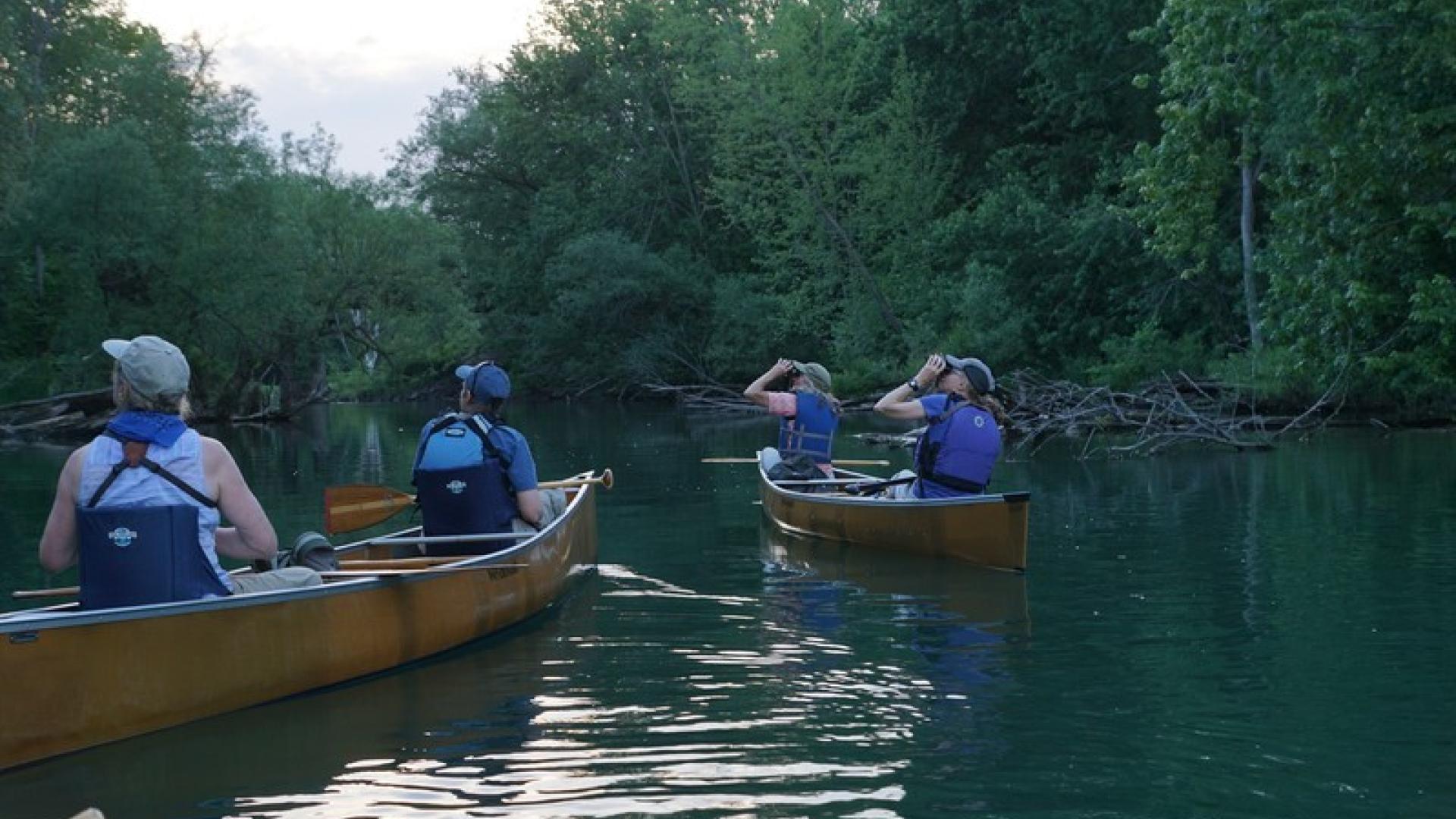Birding By Boat
Our birding trip had already been successful when the group I was leading turned its attention to the La Chute River for a canoe trip into Ti Marsh. In fact, we had done so well that we were running late and we had difficulty pulling ourselves away from the birds we were enjoying — although that is the usual state of affairs for such adventures. We even debated skipping the paddle altogether to keep birding from the road instead. But given that we had lugged our canoeing equipment with us throughout our time in the southern Champlain Valley, we chose to stick to our original plan. We were happy we did.
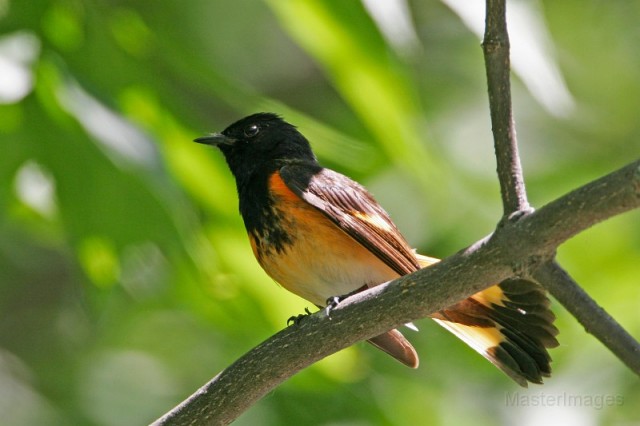
We pushed off with cool shadows over the water, but the knowledge that the long summer day would give us plenty of time to explore. Great Crested Flycatchers, Ovenbirds, Wood Thrushes, Eastern Kingbirds, American Redstarts, Baltimore Orioles, Yellow Warblers, Warbling and Red-eyed Vireos, Red-bellied Woodpeckers, and Eastern Wood-Pewees serenaded our progress, and we kept maneuvering our boats to get a look at them all. It can be tricky to get good views of birds from a moving boat, but the effort is worth it given that paddling is the best — and indeed the only — way to explore the La Chute.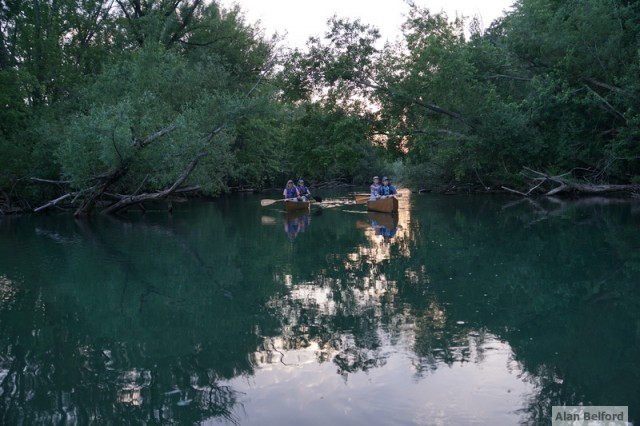
A Louisiana Waterthrush!
I also kept pausing us to listen for Louisiana Waterthrush. The La Chute is a good place to find this species, which is uncommon in the North Country. But our first few stops came up empty and we slowly advanced through the trees, a bit of a maze created by the downed logs which lined the route. Soon the nasal calls of Blue-gray Gnatcatchers (another uncommon species in the North Country) met my ears and we found a pair of them flitting on the snags and low trees, fanning their white outer tail feathers in annoyance — perhaps at our presence.
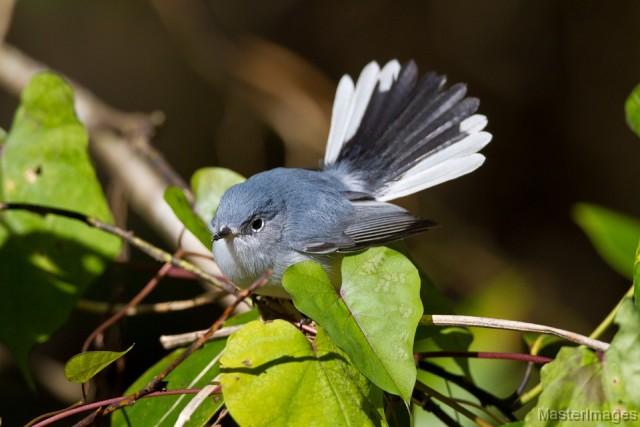
Just then a Louisiana Waterthrush sang from behind us – and we quickly reversed our course to paddle back upstream. The song of the Louisiana Waterthrush is one of my favorites, and the bird sang cooperatively from a series of perches on the snags along the river and we all enjoyed great views of it. It was a new bird for most folks on the trip. With the bird behaving so agreeably (at least from the perspective of us birders), we were once again torn between watching it longer and moving further downstream. But after some nice looks we continued on, as there was plenty more to explore before night fell.
Turtles — most likely northern map turtles — dropped plunk! into the water from the shadowy logs along the edge of the river, and we had difficulty seeing them as a result. We also inadvertently chased Green Herons from the logs as we paddled along the quiet water, and it was difficult to get a firm count on how many Green Herons there were as a result.
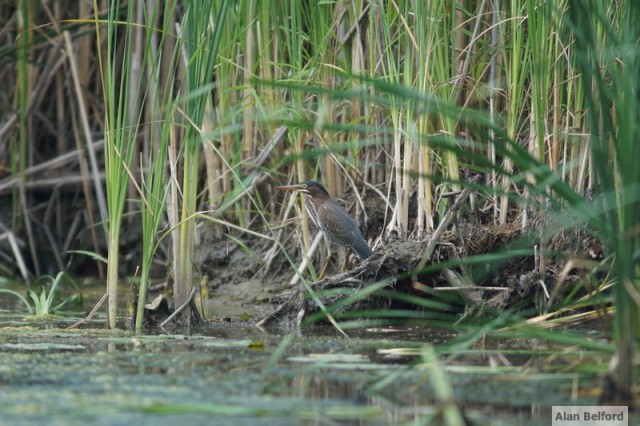
Exploring Ticonderoga Marsh
We finally reached the edge of Ti Marsh, and were immediately greeted by the songs of Swamp Sparrows and Marsh Wrens from the reeds and cattails. A Wood Duck flew overhead — the first of many that evening — as did a Great Blue Heron. We scanned the little inlets and bays of the marsh before passing beneath the railroad bridge into the main body of the marsh itself. We could see Fort Ti sitting on the bluffs above us as a flight of swallows filled the evening air overhead. Most of them were Northern Rough-winged Swallows, and we also pulled out Barn and Tree Swallows from the mix.
A Caspian Tern and a few Ring-billed Gulls fished in the open water and a Merlin raced passed. We turned our attention to the reeds and cattails, hoping to find a bittern, a rail, or some other marsh species. We didn’t find a bittern or a rail, but we did find both Common Gallinule and Pied-billed Grebe as the sun, now below the horizon, cast a gray light across the marsh. It was beautiful.
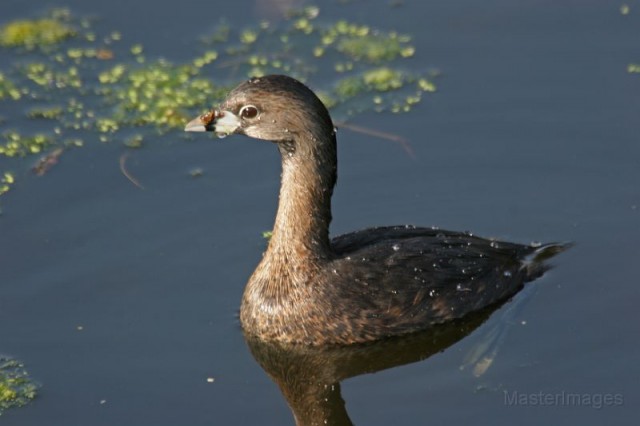
With the light fading, we still had a mile-and-a-half to paddle back out to the put-in, so we donned our lights in case we needed them and turned from the marsh to head back toward the La Chute. The birds were much quieter now, but here and there the scold of an American Robin, or the song of a Swamp Sparrow or Marsh Wren, greeted us. A pair of Blue-winged Teal twisted on fast wings overhead, dropping into some unseen pocket of the marsh. A little further along a chorus of Eastern Whip-poor-wills ushered in the night, calling from the direction of Mount Defiance, where they are often found.
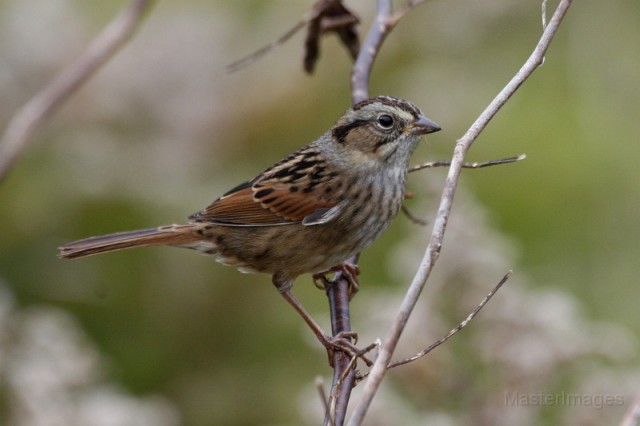
We slid along quietly, making steady and stealthy progress up the La Chute, listening to the shallowed world and talking in low tones when we needed to negotiate limbs and logs along the way. We didn’t hear much more but it was peaceful, and the alluring dim light beckoned us to continue exploring.
It was dark when we arrived back to load our boats onto the cars, and we soon had them securely fastened in place. On the way home we took a short detour to the base of Mount Defiance, where a calling Barred Owl sent us home happy.
Summer birding and paddling are great in the Champlain Valley. Plan your trip by checking out our lodging and dining pages today!

